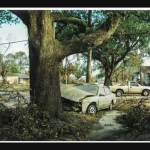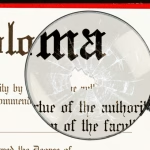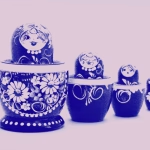I recently experienced a cheap thrill while visiting my neighborhood Joann craft supply store. A very inexpensive thrill. STORE CLOSING and ENTIRE STORE 30%–70% OFF are written on large signs that are placed on the front doors. I found that one screamed NOTHING HELD BACK to be both seductive and desperate.
I entered and wandered up and down the scuffed aisles, running my fingers over the satins, silks, fleeces, and flannels. Yarn buckets beckoned. I was even tempted to put a bathrobe in my cart—one of those things that stores like Joann mysteriously keep next to craft supplies. I soon found myself lost in nostalgic reverie, as is typical of Millennials.
The crafting equivalent of operating a neighborhood lemonade stand, I began a summer “business” at the local swimming pool when I was ten or eleven years old, selling friendship bracelets to children. That diversion developed into a lifelong passion for creating various items by hand, including blankets, clothing, bags, and numerous hot-glued monsters. Since then, I’ve spent a lot of time in craft supply stores of all kinds, including Joann, which was scheduled to close all 800 of its stores this weekend after declaring bankruptcy twice.
The chain is merely the most recent in a line of stores that have marched to the graveyard of big-box brands, so Joann’s closure may seem insignificant or even inevitable. However, the fact that there are fewer places to stock up worries a lot of people in creative circles. Many cities and towns may no longer have easy, in-person access to a dedicated craft-supply store as a result of the growth of chains like Joann over the past few decades, which effectively extinguished many mom-and-pop craft stores.
Of course, crafting does not end here. Michaels and Hobby Lobby are still in existence. Although ardent crafters will correctly point out that Walmart and Target don’t even come close to carrying Joann’s assortment of fabric and other materials, those stores do sell craft supplies. There are smaller specialty stores, but their goods are typically more costly. Yes, you can order things online, but that’s always a risk. Crafting is a very tactile activity, and when you can’t see or touch supplies before purchasing them, the reality often falls short of your expectations.
However, the passing of a dependable organization like Joann involves more than just a company’s demise. As it closes, the gap between materials and producers widens. Many people want to pursue their creative side, but some find it extremely difficult to find the time and space in the midst of daily stressors. All of that was made easier by Joann, who was accessible and reasonably priced. If you take it away, people might not even try.
Perhaps an unintended consequence of Joann’s disappearance is the loss of yet another avenue for fostering community and customs at a time when society could use more of both. Crafting can be a means of developing close, intimate relationships with others, despite the fact that it is often a solitary activity, even a form of invisible labor. At sewing class, I became close to a friend, and we spent a weekend together creating Christmas ornaments by dipping plastic dinosaurs in glitter and covering them with Elmer’s glue. (Very messy, but a lot of fun.) Many people also consider crafting to be a family tradition. My mother, who was taught by her own mother, taught me how to crochet. I’m contributing to and continuing a loving tradition when I crochet a blanket. I can keep the finished product for years or even generations. When I spent a winter in Chicago, my mother crocheted me a pink, blue, and white afghan blanket, which is one of my most cherished items.
Although it can be, crafting isn’t always a pointless activity. It does, in fact, hold a legendary position in the political and cultural history of America. As American colonists boycotted British imports during the Revolutionary War era, women began spinning their own yarn as part of the “homespun” movement. (The notion that Betsy Ross sewed George Washington’s sketch of the first American flag, one of the nation’s most well-known creation myths, is undoubtedly a crafty tale.) For many years, sewing circles have served as a forum for political activism, discussion, and agitation. Frederick Douglass wrote a contemplative letter to a Massachusetts antislavery sewing circle in 1846, probably in response to the group’s members contacting him about their interest in abolitionist causes. There have also been notable public displays as a result of “craftivism.” In honor of those who had lost their lives to AIDS, thousands of people donated panels to the AIDS Memorial Quilt during the 1980s pandemic. During the Women’s March on Washington in 2017, attendees knitted and donned pink “pussy hats.”
Crafting has the potential to become a fine art or a sustainable source of income for those who are gifted and devoted. Simply put, though, it is also rewarding. How many hours I’ve spent sewing (and ripping out) stitches and reading patterns is beyond me. A cream-colored fisherman’s afghan that I loved so much that I was sad to give it away is one of the many handmade gifts I’ve made. Other gifts, like an uneven, lumpy quilt I sewed in my early 20s, were at best cute.
Ultimately, inspiration and serendipity—two of crafting’s most essential components—are lost when a store like Joann closes. Many crafters are inspired to try something new by the tactile experiences of feeling the weight of a particular yarn, observing the subtlety of certain colors in particular lights, or seeing a finished product on a shelf. Crafting feels worthwhile in part because of this rich display of possibilities. This is why I never felt guilty about trying a new medium because I have tried a lot of different projects over the years, with differing degrees of success. It’s also the reason I stopped and picked up a beginner’s cross-stitching kit on my most recent—and probably last—trip to Joann as I was heading to the checkout with multiple skeins of discounted yarn. I might finally get the hang of it now.













